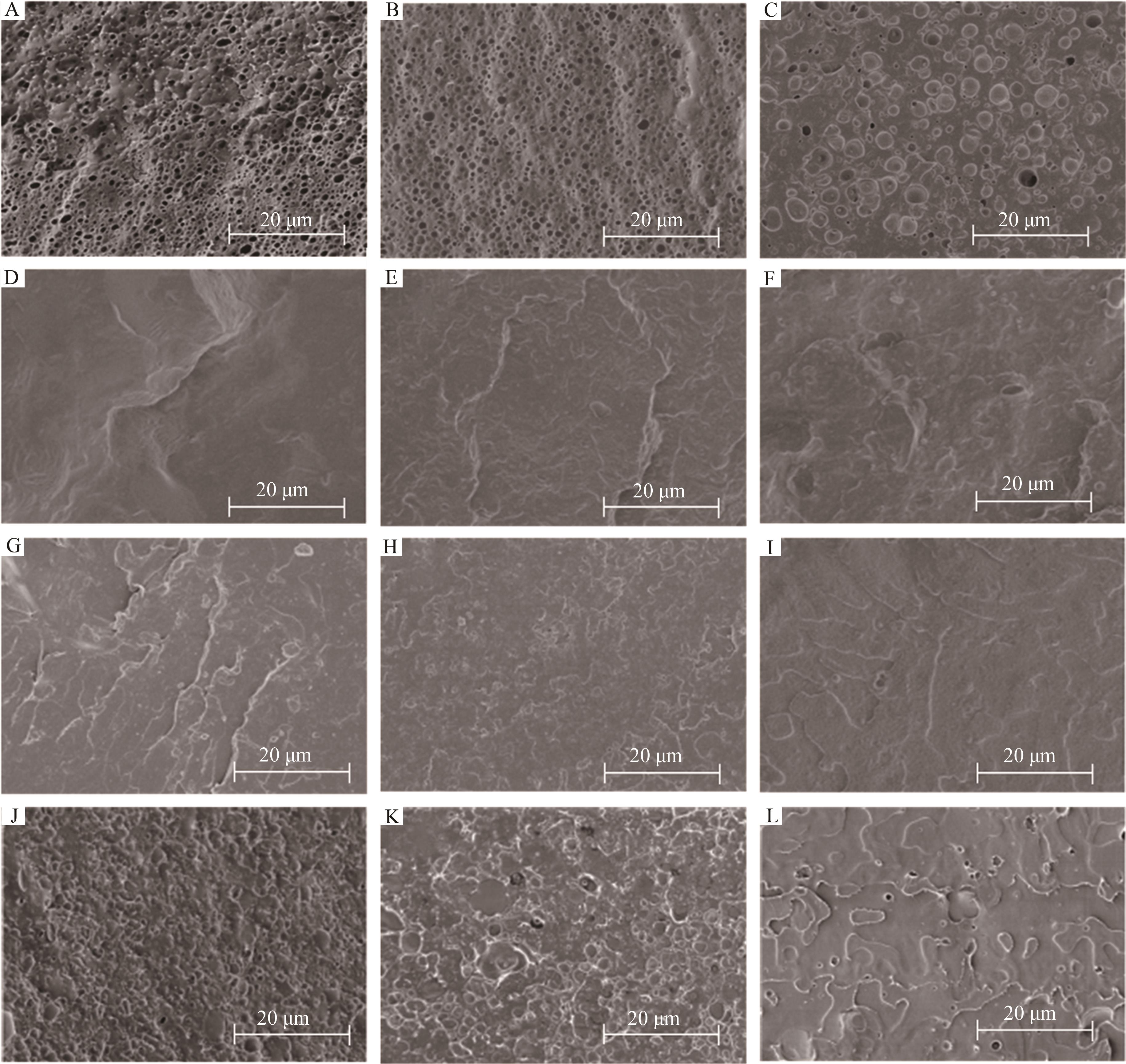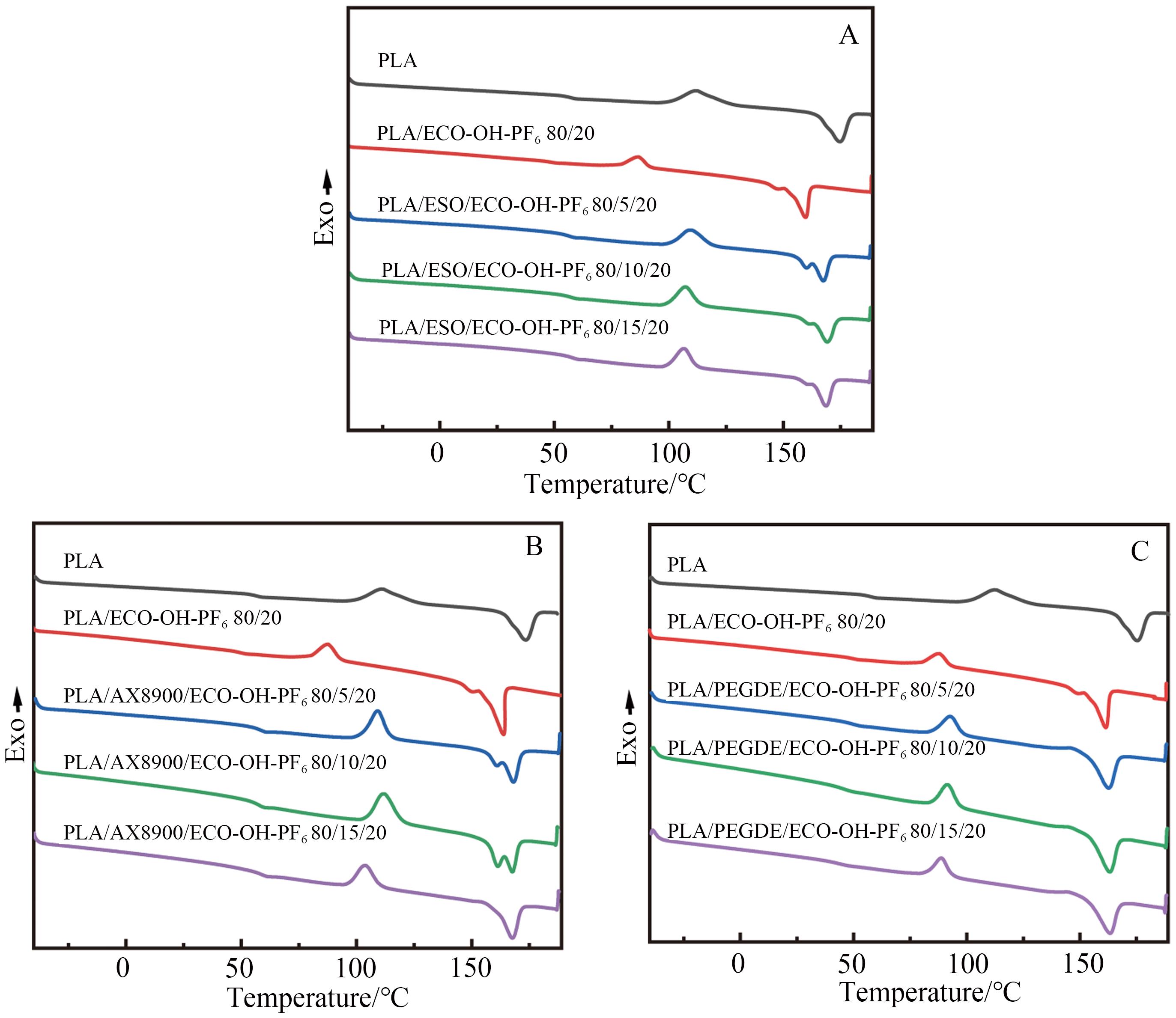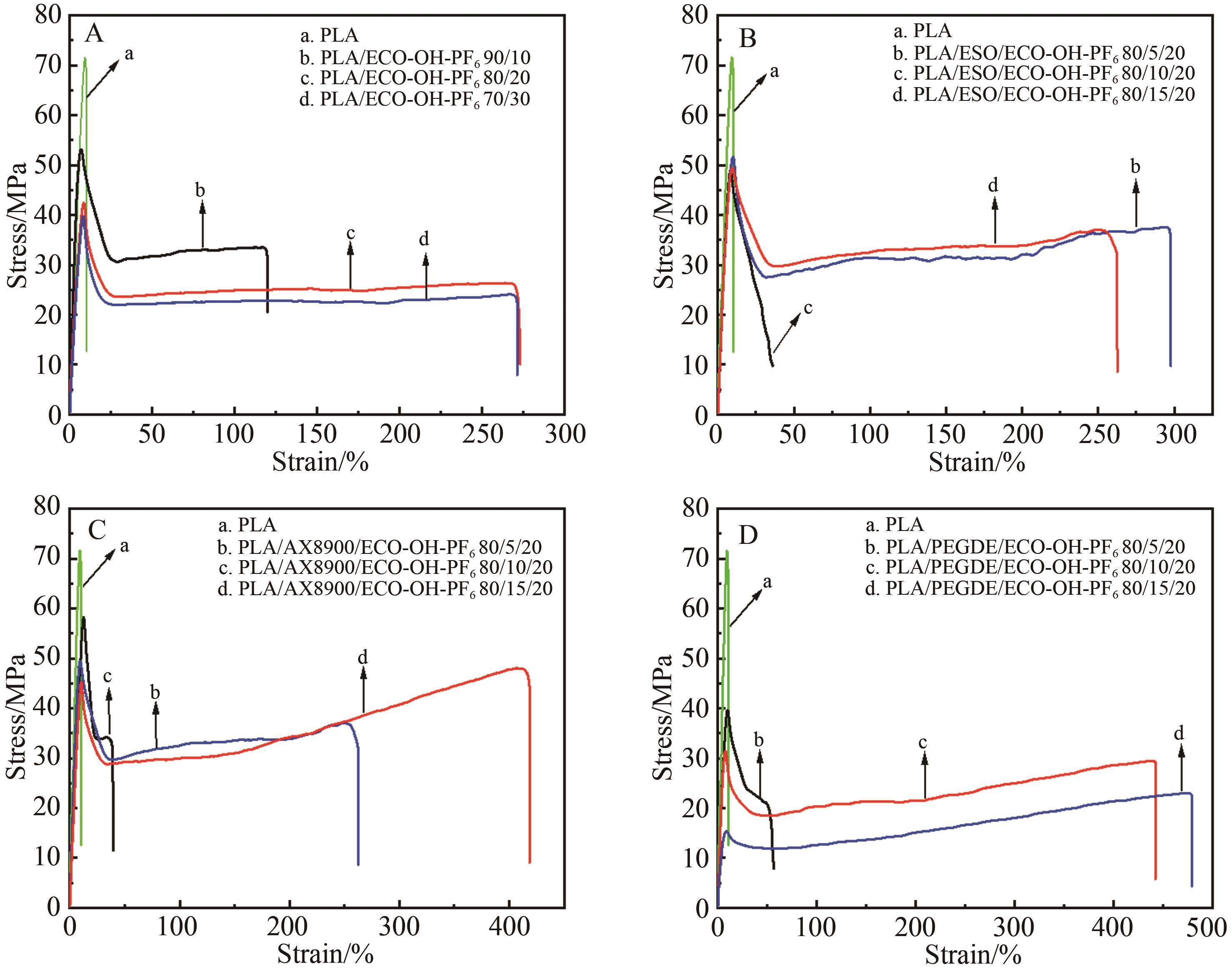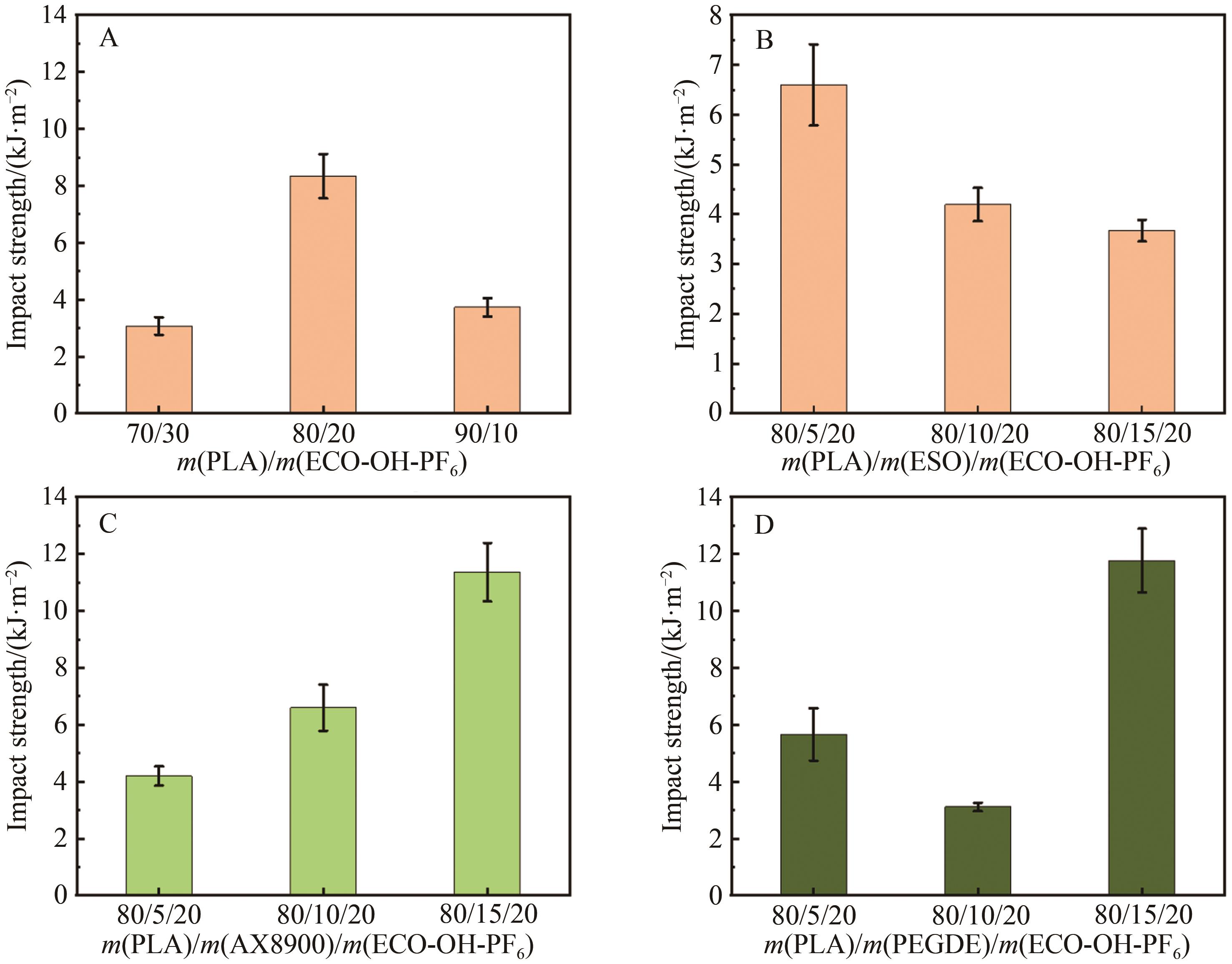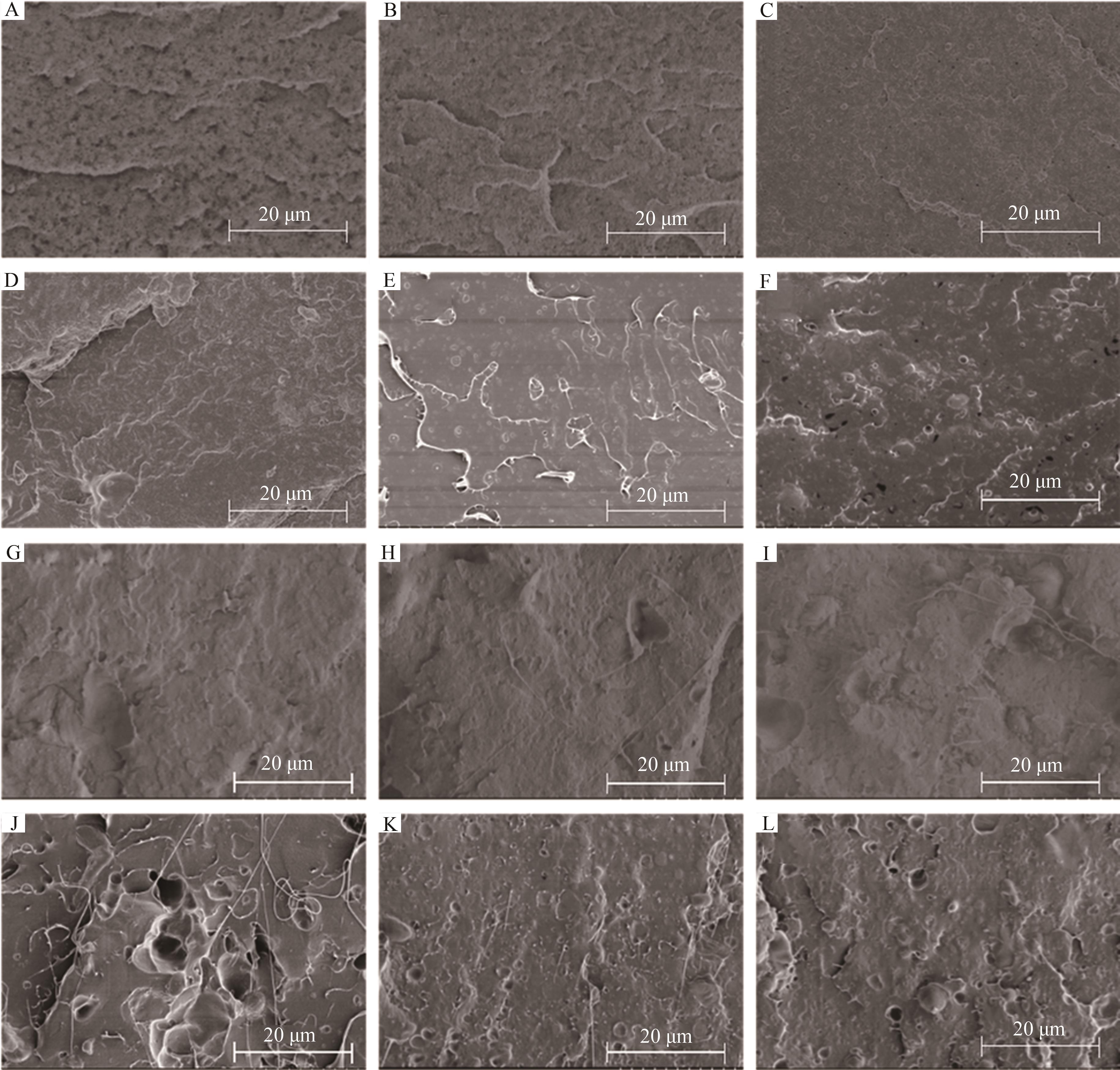
应用化学 ›› 2022, Vol. 39 ›› Issue (12): 1870-1879.DOI: 10.19894/j.issn.1000-0518.220055
羟基功能化离聚物与含环氧基团增容剂协同改性聚乳酸
马轶莲1, 胡浩东1, 丁营利2, 陈相见2, 崔亮3( ), 张坤玉3(
), 张坤玉3( )
)
- 1.天津大学化工学院,天津 300350
2.天津大学材料科学与工程学院,天津市材料复合与功能化重点实验室,天津 300350
3.中国石油天然气股份有限公司石油化工研究院,北京 102299
Modification of Polylactic Acid by Reactive Blending with Functionalized Imidazolium-based Ionomers and Epoxy-containing Additives
Yi-Lian MA1, Hao-Dong HU1, Ying-Li DING2, Xiang-Jian CHEN2, Liang CUI3( ), Kun-Yu ZHANG3(
), Kun-Yu ZHANG3( )
)
- 1.School of Chemical Engineering and Technology,Tianjin University,Tianjin 300350,China
2.Tianjin Key Laboratory of Composite and Functional Materials,School of Materials Science and Engineering,Tianjin University,Tianjin 300350,China
3.Advanced Materials Research Center,Petrochemical Research Institute,Petro China Company Limited,Beijing 102206,China
摘要:
针对聚乳酸脆性严重的问题,以羟基功能化离聚物作为增韧剂,与含环氧基团助剂增容剂协同配合,采用熔融反应共混的方法,制备高韧性聚乳酸(PLA)基多元共混材料。通过扫描电子显微镜(SEM)、傅里叶变换红外光谱仪(FT-IR)、差示扫描量热仪(DSC)和力学性能测试等手段对共混体系的结构与性能进行了深入表征分析,比较了环氧大豆油(ESO)、聚乙二醇二缩水甘油醚(PEGDE)和乙烯-丙烯酸甲酯-甲基丙烯酸缩水甘油酯(AX8900)三元共聚物的协同增容增韧效果。结果表明,增容效果与助剂环氧基团含量和位置密切相关,通过调控环氧基团的含量和位置而呈现不同的增韧改性效果: 适量AX8900的加入可有效改善共混体系的韧性,有利于获得均衡的力学性能,最优冲击密度高于12 kJ/m2,拉伸强度在40 MPa以上。而ESO容易导致交联发生,从而限制了增韧效率;PEGDE因增容效果较差主要呈现增塑作用,导致拉伸强度降低。研究结果揭示了不同环氧助剂与含羟基聚合物协同改性PLA共混体系的内在机理,为开发高性能生物基PLA材料提供了参考指导。
中图分类号:

